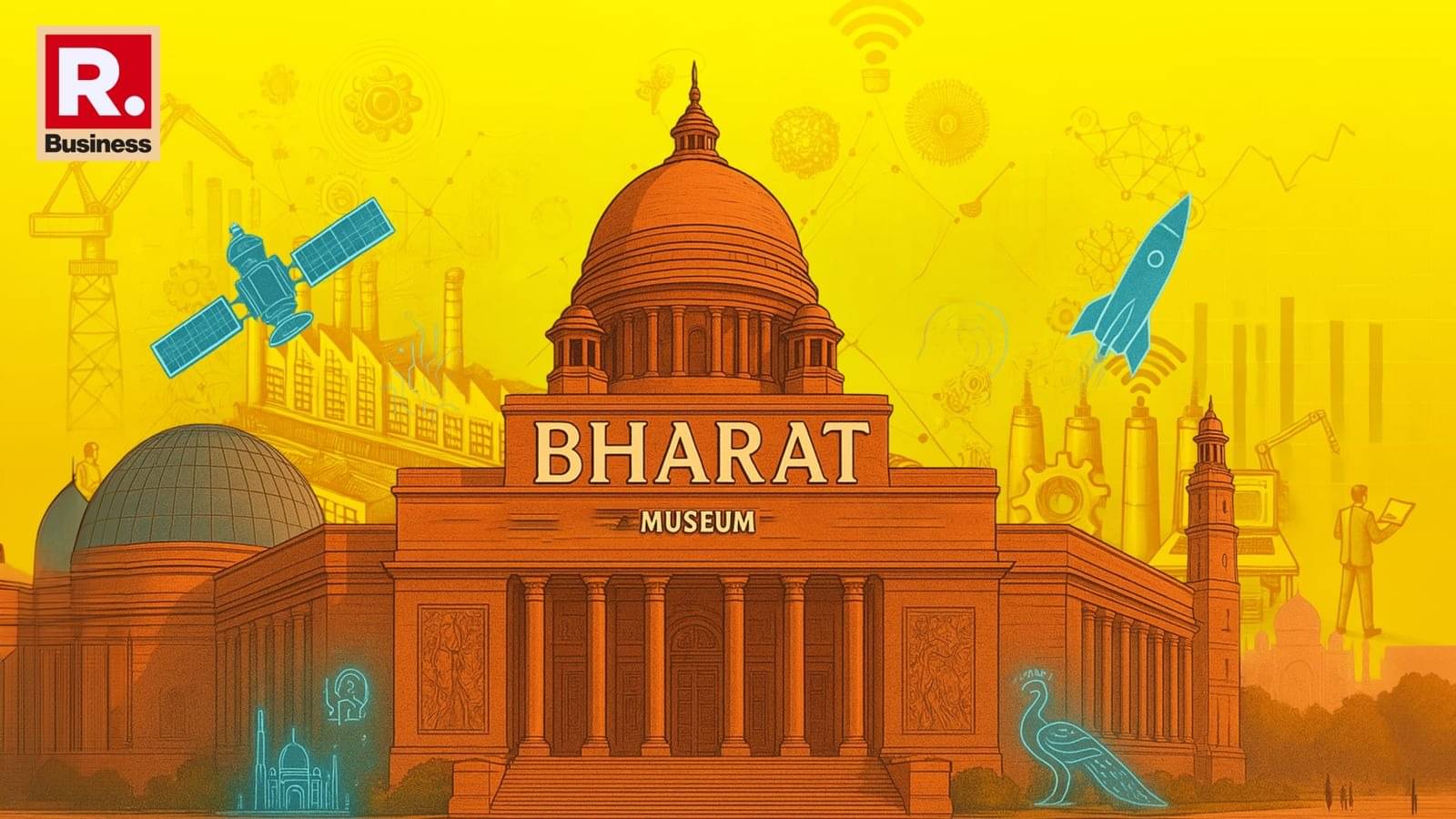Bharat : A Civilisation That Merits A Museum Like No Other | Image:
Republic
All leading world powers are not only economic, cultural, and military powers but also ‘museum powers’.
Washington, Paris, and Beijing, three very different places, share this in common.
In Paris, The Louvre is the world’s most visited museum, welcoming 8.7 million visitors in 2024, while the Musée d’Orsay drew another 3.75 million. These two institutions alone shape France’s global cultural stature.

In Washington, the Smithsonian Institution is the largest museum and research complex in the world. Collectively, its museums welcomed 16.8 million visitors in 2024, anchoring America’s soft power and educational reach.
In Beijing, the National Museum of China received 6.96 million visitors in 2024, consistently ranking among the world’s most visited museums and serving as a hub for China’s cultural projection.
China, in fact, has openly declared its ambition to become a museum superpower. In 1980, it had fewer than 400 museums. By 2020, that number had crossed 5,000, and today it has surged to 7,046 museums as of 2025. More than 91% of these offer free admission, welcoming 1.49 billion annual visitors and hosting over 43,000 exhibitions each year.
The Chinese government sees museums not as passive storehouses, but as engines of soft power, civic education, and cultural pride and it invests accordingly.
India, by contrast, has about 1,000 formally institutionalised museums.
While there are more individual initiatives, the network as a whole remains fragmented, underfunded, and far less ambitious in scope.
Despite being a civilisation of unmatched depth and diversity, India still lacks a single flagship institution that narrates the grand civilisational story of Bharat.
Many smaller private and local museums have indeed sprung up but they are unable to make a civilisational impact.
Beyond Numbers to Cultural Narration
India’s rise on the global stage is visible in numbers. As the world’s fifth-largest economy, the fastest-growing major market, a hub for technology and innovation we are rising.

Yet, there is one stage on which India has yet to claim its rightful place and that is the stage of cultural narration.
For a civilisation that has given humanity philosophies, sciences, arts, and spiritual traditions, India still lacks a museum that tells its story to itself and to the world.
What India needs is a Museum of Bharat . Think not a giant building with halls full of artefacts, but the greatest immersive experience of our civilisational journey.
The Quality Gap: Funding, Curation, Engagement
India’s museum landscape is wide but inconsistent. Chronic underfunding limits maintenance, programming, and innovation. Curatorial depth is often thin, with too few research posts and limited professional training pipelines.
When it comes to visitor engagement, many Indian museums still rely on static labels, glass cases, and rote explanations rather than interpretation and storytelling.

These gaps have been highlighted in museum summits and policy papers, where directors have admitted that India struggles to attract international loans, sustain outreach programmes, or raise funds beyond government grants.
To address this, the Ministry of Culture has introduced schemes such as the Museum Grant Scheme, a Digitisation Scheme, and a best-practices handbook to improve standards and visitor experience. Tools like JATAN: Virtual Museum Builder and the National Portal & Digital Repository for Museums of India represent important steps toward unifying digital infrastructure. But progress remains fragmented, and India has yet to build a museum that synthesises its entire civilisational depth.
Proof of Concept: Indian Digital Successes
The good news is that India already has pioneering examples that show what a modern Museum of Bharat could achieve
- National Digital Repository (NDR) + JATAN: Funded by the Ministry of Culture and built by C-DAC, this initiative aggregates collections from major national museums into a single digital portal and it’s India’s first serious attempt at integrated public access.
- MAP Bengaluru — “M. F. Husain: An AI Experience”: In collaboration with Accenture Labs, the Museum of Art & Photography created a conversational digital persona of the legendary painter. Visitors can “talk” to Husain’s AI twin and hear simulated answers, blending art and artificial intelligence into a wholly new interpretive form.
- Google Arts & Culture Collaborations: The National Museum and others have partnered with Google to digitise collections in high resolution, create virtual tours, and build projects like “Life in Miniature,” which reimagined Indian miniatures through interactive, ML-powered storytelling.
- Regional Digital Initiatives: Museums from Lucknow to Hyderabad are experimenting with 360° tours, 3D scanning, and digital libraries, indicating that immersive access is spreading beyond metropolitan flagships.
These projects prove that India already has the technical capacity (AI, VR, AR, holography, gigapixel capture) and creative energy (from start-ups to design labs) to create world-class museum experiences. The task now is to bring them together under one roof and one narrative — in a Museum of Bharat.
From Static Displays to Living Experiences
A Museum of Bharat must go further than piecemeal digital experiments.
Imagine walking through a gallery where the Indus Valley comes alive as a bustling city reconstructed with AI-driven archaeology.
Picture Ashoka’s edicts projected onto walls, while voice simulations let you hear them in Prakrit, Sanskrit, and modern Indian languages. Step into a 360° immersive chamber and experience a Mughal atelier, watching artisans paint miniatures as music plays in the background.
This is not indulgence but pedagogy for a generation that deserves interactivity. India has the digital infrastructure, creative talent, and storytelling traditions to make this vision real.
Pluralism as the Core Narrative
Technology is the medium; the message matters even more.
A Museum of Bharat must affirm the truth that India is not one but many. Ours is a civilisation of pluralism, dialogue, and synthesis. Hindu, Buddhist, Jain, Islamic, Sikh, Christian, tribal, and other traditions have all left their imprint. This pluralism is not a weakness but a strength, and the museum must tell this story boldly that India is a civilisation of many strands woven into one fabric.

A National Project for a Civilisational Future
Creating such a museum cannot be left to the Government alone. It must be a national project, bringing together government, philanthropy, global partners, and India’s vibrant creative industries.
The Museum of Bharat must be conceived not as a shrine but as a living dialogue hosting debates, workshops, performances, and festivals, and constantly evolving with new narratives and technologies.
As India approaches the centenary of independence in 2047, building a Museum of Bharat would be a fitting act of self-definition. It would honour the plural past, inspire the present, and shape the future.
India has given the world philosophies of tolerance, the zero, yoga, Ayurveda, music, poetry, and democracy. Let us now give ourselves, and the world, a stage where all of these can be experienced in their full splendour.
The Museum of Bharat is not just about preserving what we were. It is about proclaiming what we are, and what we aspire to be.
Arihan Singh is an IB student of Class 11 at the Bombay International School and the founder of the Museum Learning Network, an initiative that aims to turn museums into “living classrooms” for every child.
Read More – Why MSME Brands Matter And What We Can Learn From Other Economies

